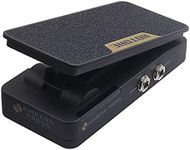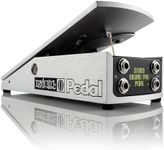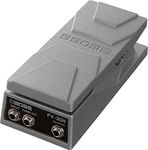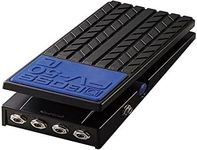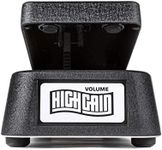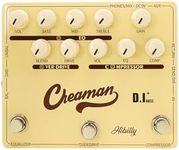Buying Guide for the Best Guitar Volume Pedals
Choosing the right guitar volume pedal can significantly enhance your playing experience by giving you control over your sound dynamics. A volume pedal allows you to adjust the volume of your guitar without using your hands, which can be particularly useful during live performances or when you need to make quick adjustments. To find the best fit for you, it's important to understand the key specifications and how they align with your needs and playing style.Type (Active vs. Passive)Volume pedals come in two main types: active and passive. Active volume pedals require a power source (usually a battery or power adapter) and often include a buffer to maintain signal strength, which is important if you use long cable runs or have a lot of pedals in your signal chain. Passive volume pedals do not require power and are simpler in design, but they can sometimes cause a loss in signal strength. If you have a complex setup or need to preserve your tone, an active pedal might be the better choice. If you prefer simplicity and don't have a long signal chain, a passive pedal could be sufficient.
ImpedanceImpedance refers to the resistance of the pedal to the electrical signal from your guitar. Volume pedals come in high-impedance and low-impedance versions. High-impedance pedals are typically used with passive pickups (common in electric guitars), while low-impedance pedals are used with active pickups or in the effects loop of an amplifier. Choosing the right impedance is crucial for maintaining your guitar's tone. If you use a standard electric guitar with passive pickups, go for a high-impedance pedal. If you have active pickups or plan to place the pedal in the effects loop, opt for a low-impedance pedal.
Size and Build QualityThe size and build quality of a volume pedal can affect its durability and ease of use. Larger pedals often provide a more comfortable and precise control but can take up more space on your pedalboard. Smaller pedals are more compact and portable but might be less comfortable for some players. Build quality is also important; a well-constructed pedal made from durable materials will last longer and withstand the rigors of frequent use. Consider how much space you have on your pedalboard and how often you plan to use the pedal when deciding on the size and build quality.
TaperThe taper of a volume pedal refers to how the volume changes as you move the pedal. There are two main types: linear and audio (logarithmic) taper. A linear taper changes the volume evenly across the pedal's range, while an audio taper changes the volume more gradually at the beginning and more rapidly towards the end, mimicking the way our ears perceive sound. If you want smooth and gradual volume changes, an audio taper might be more suitable. If you prefer a more predictable and even volume change, a linear taper could be the better option.
Additional FeaturesSome volume pedals come with additional features such as built-in tuners, expression pedal capabilities, or adjustable minimum volume settings. These features can add versatility to your pedal and enhance your playing experience. For example, a built-in tuner can save space on your pedalboard, while an expression pedal capability can allow you to control other effects. Consider what additional features might be useful for your playing style and whether they justify any extra cost or complexity.



